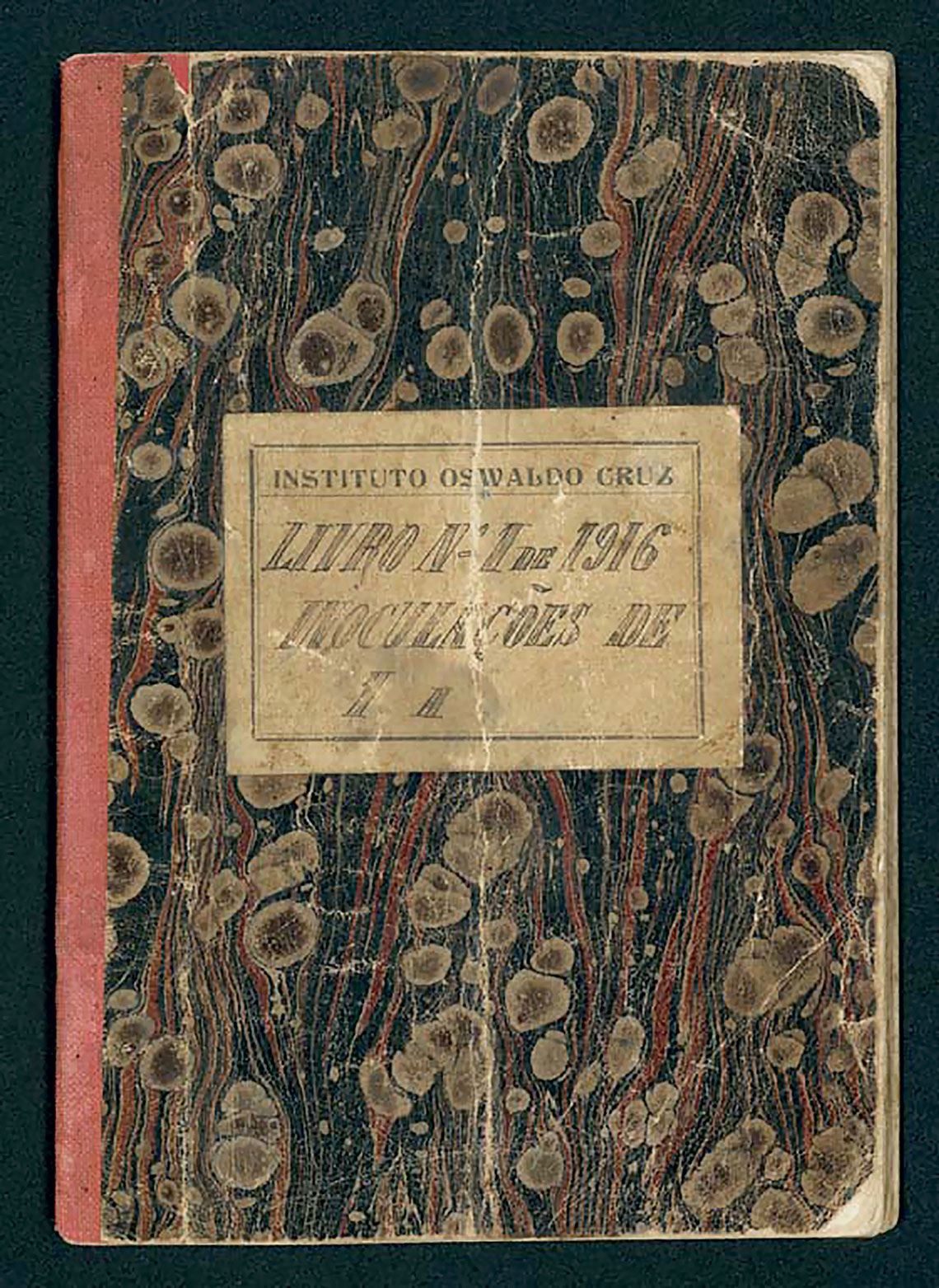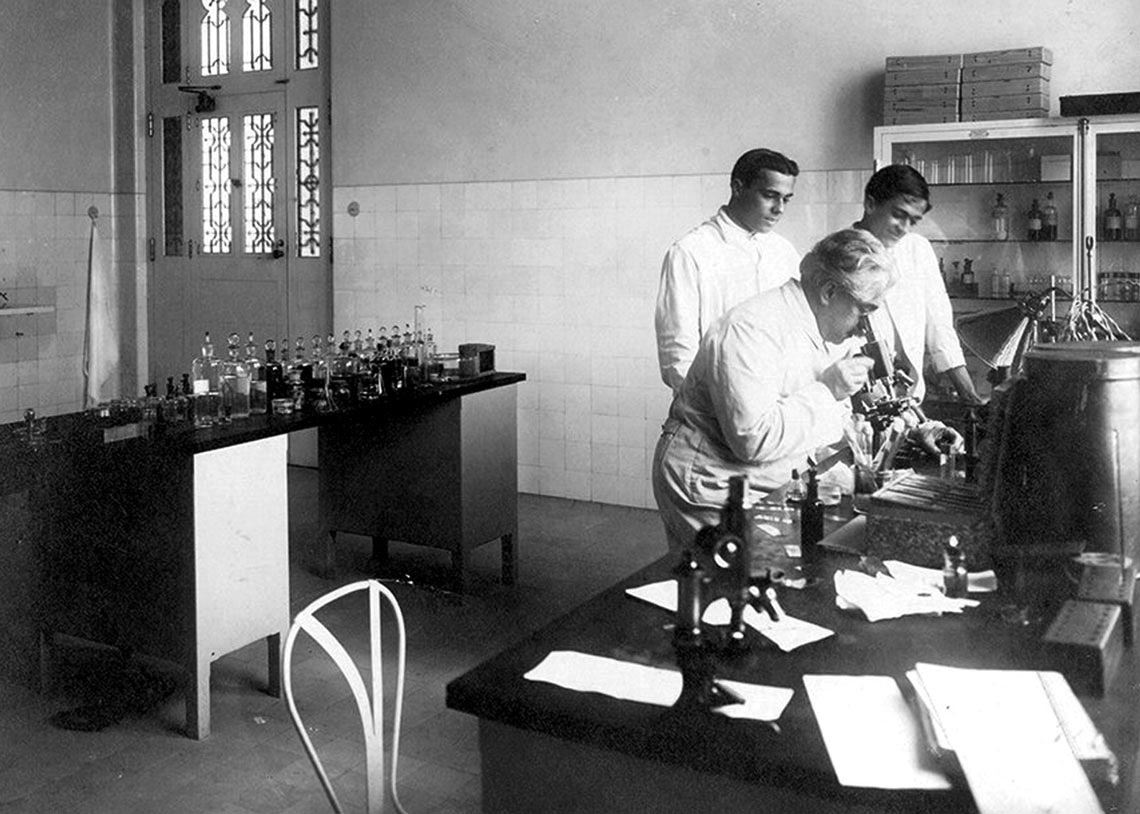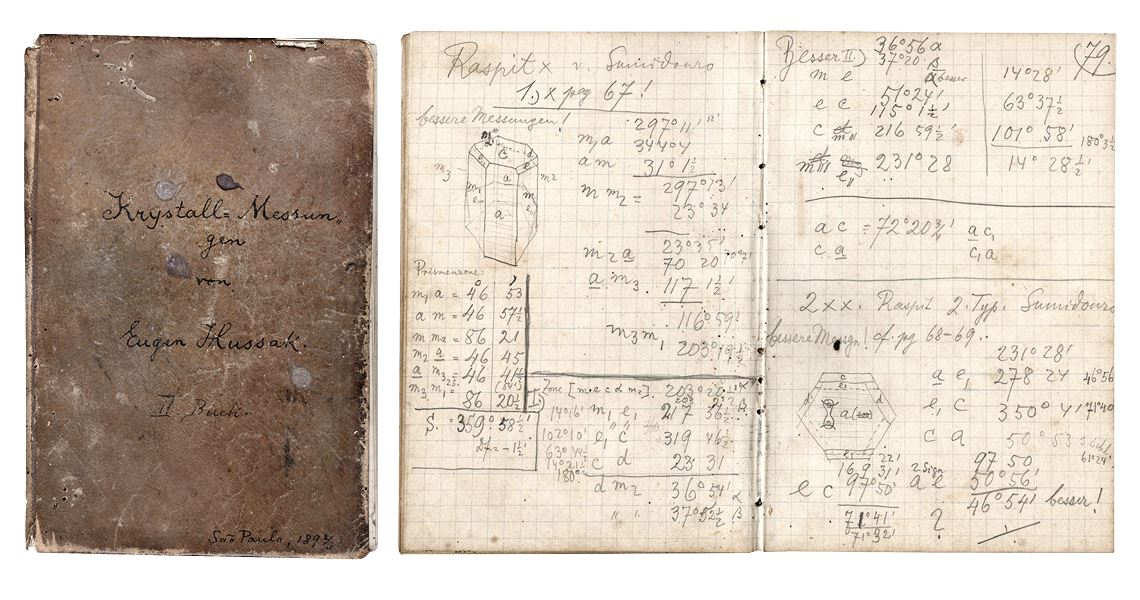“It is as if we are peeking over his shoulder as he plans and carries out experiments both trivial and deep.” This is how Gerald Geison (1943–2001), professor of science history at Princeton University, describes it in his book The Private Science of Louis Pasteur (Contraponto/FIOCRUZ, 2002), in which he analyzes more than a hundred laboratory notebooks and other manuscripts by Louis Pasteur (1822–1895) and his collaborators over four decades of research. At the request of the French scientist himself, the records remained hidden for almost a century and only became accessible to the public in 1971, when they were given to the National Library of Paris by his family. “It is interesting how these documents, especially the notebooks, can help demystify Pasteur by revealing not a genius or a hero, but a much more complex character, who not only doubted and contradicted himself, but made mistakes,” explains historian Paulo Elian, director of the Oswaldo Cruz House (COC), an institute for historical research and the preservation of the heritage and memory of the Oswaldo Cruz Foundation (FIOCRUZ), in Rio de Janeiro.
A tool for scientists to record data, details, and stages of their experiments, the laboratory notebook has inspired Elian’s research for nearly two decades. The historian first approached the subject during the pursuit of his master’s degree, obtained in 2003 from the Social History Post-graduate Program at the University of São Paulo School of Philosophy, Languages and Literature, and Humanities (FFLCH-USP). Here he investigated how scientists put together and organized their personal files, starting with the career of public health officer Rostan Soares (1914–1996), a researcher at FIOCRUZ for almost five decades. “The Oswaldo Cruz House archive is vast, containing dozens of notebooks,” says Elian. “Although they have not been thoroughly investigated in Brazil, laboratory notebooks can be precious sources for science historians, for example—hence the importance of preserving this material.” Another important point is that such notebooks can help clarify any questions about best practice in science, such as data fabrication and research originality.
Since 2016, Elian has been developing his research: “Biomedical sciences and the history of the IOC: An analysis of institutional and personal archives,” at 15 of the 72 laboratories at the Oswaldo Cruz Institute. “The goal is to try to understand the relationship between our scientists and their documents, which varies greatly. Some of them are much more interested in the historical and documental aspect than others,” he notes. One of the projects he created in 2019 and which was directed by Cristiana Grumbach is the video Cadernos de Laboratório (Laboratory Notebooks). In this film, historians, archivists, and scientists reflect on the importance of this document, which not only records the beginnings of a research effort but is also a source of reference for other studies, including memory-focused studies.
Amid the many documents analyzed, Elian’s attention was drawn to the different names given to the laboratory notebooks. There is a “protocol notebook,” a “clinical research notebook,” a “samples notebook,” among others. “Their role is nearly the same. What these different names suggest is that there is no strict standard for managing the notebooks,” he points out. Archivist Maria Celina Soares de Mello e Silva, from the historical archive of the Imperial Museum, in Petrópolis (Rio de Janeiro), goes further. “We need guidelines and a national policy to preserve the memory of science and technology in the country,” she states. For 34 years, Silva worked at the Science History Archive of the Museum of Astronomy and Related Sciences (MAST), in Rio de Janeiro, which houses the personal archives of more than 50 researchers—mainly from exact sciences, such as astronomy, chemistry, and mathematics. “Many of the personal archives of scientists given to us contained institutional documents, which should not have been at the researcher’s home,” she exemplifies. “When this happens, it is usually because the institution in which the scientist worked had no concern for the custody and preservation of such a document.”

Oswaldo Cruz House Collection / Publicity
A laboratory notebook by Carlos Chagas on experiments involving the inoculation of Trypanosoma cruzi in subjectsOswaldo Cruz House Collection / PublicityBased on findings such as these, Silva coordinated a study at MAST, from 2003 to 2006, on the production and preservation of science and technology records in the city of Rio. In a year and a half, she visited 102 laboratories from seven institutes linked to the Ministry of Science, Technology, and Innovations, such as the Institute of Nuclear Engineering and the Institute for Pure and Applied Mathematics. The investigation was documented by Silva’s 2007 PhD thesis, defended at FFLCH-USP. “As there was no institutional policy to preserve laboratory documents, in the institutions we visited the scientists themselves oversaw such preservation—despite having no expertise or time for it. Many documents were lost because of this,” she shares. “Regarding the laboratory notebooks, we found that some researchers had no idea whether they were personal documents, that could be taken home with them, or if they belonged in the institution.”
Jackson Cioni Bittencourt, from the USP Institute of Biomedical Sciences (ICB-USP) and president of the USP Agency for Academic Information Management, makes it very clear: “Laboratory notebooks must stay in the lab.” In 2017, when he oversaw the ICB, the Office for Best Practice in Science was established, meaning there was a new standard for the laboratory notebooks produced there. The template was inspired by a notebook used by Bittencourt in his PhD research at the Centre National de la Recherche Scientifique (CNRS), in France.
Since then, the notebooks given to each researcher are numbered and catalogued and remain in the laboratory for five years before being permanently moved to the institution library. The first page contains guidelines for researchers on how to use it, detailing that any changes should be accompanied by the date and a signature, and that it must not be removed from the institution. “It is a document that belongs to USP, since the research is developed within the university,” says Bittencourt. “It reinforces the issue of intellectual property and increases the security of both the data and the scientist in case the research is questioned at any point. In addition, the notebook can be a source for similar research within the ICB.”
Scientists have been taking notes on their experiments for a long time. “It is difficult to determine when this first began, but both Leonardo da Vinci [1452–1519] and Galileo Galilei [1564–1642] already had notebooks,” shares historian Gildo Magalhães do Santos Filho, director of the USP Interunits Center for Science History. “However, notebooks first became a research protocol in laboratories during the eighteenth century.” Márcia Regina Barros da Silva, professor of science history at USP, points to the European scientific expeditions carried out in America, Africa, and Asia from the eighteenth century onward. “These exploratory trips included a natural philosopher—only called a scientist in the early nineteenth century—who made notes including both text and drawings,” says Silva, coordinator of the Laboratory of History, Technology, and Society at FFLCH-USP. She goes on: “It is interesting that the idea of notes has changed throughout history as science itself changes.” As an example, she cites British chemist and physicist Robert Boyle (1627–1691), who did not describe the sealing materials used in his vacuum machine. “He found it unnecessary to include such detail at the time, but today we must record each step taken,” she says.

Oswaldo Cruz House Collection / Publicity
Health officer Oswaldo Cruz at the microscope, teaching his son Bento and scientist Carlos Burle de Figueiredo in one of the Castelo Manguinhos laboratories, in 1910Oswaldo Cruz House Collection / PublicityNotebooks are not exclusive to scientists in the fields of exact and life sciences. Humanities researchers also make use of a similar device—the field notebook. “We, anthropologists, use field notebooks as the first analysis tool; it contains not only personal impressions, as in a personal diary, but especially on-site observations, such as the setting and the people involved in the research,” explains José Guilherme Cantor Magnani, coordinator of the Center for Urban Anthropology Laboratory at USP. “It is an old tool, but still useful. And here in the laboratory, despite having smartphones, we still use paper notebooks that can fit in our pockets,” he shares.
“Today, some of my colleagues record their fieldwork using text or audio applications on their phones, but many still prefer paper notebooks, which can work anywhere and do not require batteries,” says anthropologist Luísa Valentini. In early 2020, the researcher defended her thesis at FFLCH-USP on the research documents of ethnologists Lux Vidal (see Pesquisa FAPESP issue no. 251), Pedro Agostinho, and Rafael Menezes Bastos. Since the late 1960s, they have been doing fieldwork on the country’s indigenous peoples. “One thing that has remained consistent in anthropology over time, in my view, is that field notebooks are very personal and not always shared.” In this regard, Magnani shares a story about the posthumous publication of the field notebooks of Bronislaw Malinowski (1884–1942) by the anthropologist’s wife in 1967. “Originally written in Polish, the anthropologist’s mother tongue, it covers part of his fieldwork with the Mailu and the Trobriand peoples, in New Guinea. Written as a personal diary, it basically records his moods, health concerns, impressions, and opinions about the indigenous people, and his work conditions—his loneliness, readings, encounters—as well as foul smells, noises, and temptations. It was very controversial among scientists, outraging former students, and raising questions about the usefulness and validity of the effort.”
Research notebooks are not exclusive to scientists in the fields of exact and life sciences. Humanities researchers have field notebooks
According to Valentini, to ensure the privacy of the information, some researchers even write in little-known languages. Their handwriting can also help keep the information private. According to historian Everaldo Pereira Frade, from the MAST Science History Archive, some notebooks at the institution contain passages that are illegible. Such is the case with the notebooks of German ornithologist Helmut Sick (1910–1991), who later became a Brazilian citizen and a pioneer in ornithology in the country. It is also the case of Brazil-based Austrian mineralogist Eugen Hussak (1856–1911), who worked at the Commission for the Exploration of the Central Plateau and the Geological and Mineralogical Service of Brazil. “These are usually notes produced during the expeditions, in situations that were not always favorable,” Frade points out. “But in some cases, illegible handwriting is an intentional way of hiding data. The text becomes particularly incomprehensible when foreign languages and dialects are used.”
Geographer Larissa Alves de Lira, a visiting professor at the Institute of Geosciences at the Federal University of Minas Gerais, faced such a challenge during her research on Pierre Monbeig (1908–1987). Part of the collection of the French geographer—who helped establish geography in Brazil—is at the archive of the Brazilian Studies Institute (IEB-USP) and includes two 1940s travel notebooks about the Northeast. The researcher used them as sources for her thesis, defended in 2017 at FFLCH-USP. “I created spreadsheets to figure out the variations of his handwriting and try to translate the notes that way, but there are still many illegible parts,” says Lira.

Science History Archive Collection at the Museum of Astronomy and Related Sciences / Publicity
A notebook containing data collected by the Brazil-based Austrian mineralogist Eugen Hussak, during research in the state of São Paulo, in the late nineteenth centuryScience History Archive Collection at the Museum of Astronomy and Related Sciences / PublicityMonbeig was a friend of São Paulo intellectual Caio Prado Jr. (1907–1990), whose archives are also at the IEB. For nearly 20 years, historian Paulo Teixeira Iumatti, who used to teach at the IEB and is now with the University of Sorbonne Nouvelle in France, has been focusing on this collection. One of Prado Junior’s notebooks from the 1930s and 1940s stands out in his opinion: it includes the reports from “Trip to Ouro Preto” (1940) and “Trip to Diamantina” (1941). “These two 84-page manuscripts included photographic surveys documenting the writing of his 1942 book Formação do Brasil contemporâneo (The formation of contemporary Brazil),” explains Iumatti, author of História, dialética e diálogo com as ciências: A gênese de Formação do Brasil contemporâneo (1933–1942), de Caio Prado Jr. (History, dialectic, and dialogue with the sciences: The genesis of ‘Formation of contemporary Brazil’ (1933–1942), by Caio Prado Jr.) (Intermeios, 2018). “Some argue that, when analyzing the work of an author, researchers must consider only what has been published. But I believe reading manuscripts can bring new meaning to the works. Caio Prado Jr.’s notebooks, for example, reflect his experiences, contain a number of ongoing formulations, and evidence his intellectual evolution, precisely because they reveal the author’s hesitations.”
Today, after moving beyond the use of paper, laboratory notebooks can also be found in digital form. Open-notebook science is the next step. According to its most radical interpretation, researchers make their raw data available online in real time, as their work progresses, so that the information can be accessed, analyzed, interpreted, and used by all interested parties. Information scientist Anne Clinio explains that the term “open-notebook science” was proposed in 2006 by chemist Jean-Claude Bradley (1967–2014), of Drexel University in the United States. “Bradley believed science should be quicker and more efficient through the opening of laboratory notebooks, as they contain records of the procedures, steps, inputs, protocols, failures, and successes that characterize the production of knowledge,” claims the independent researcher. “According to this view, laboratory notebooks, and not scientific articles, are the ones that present actual possibilities of scrutiny, validation, correction, refutation, collaboration, and learning. Bradley thought only those who document and openly share their experiments truly contribute to science.”
This practice is in line with the provisions of Open Science, a growing international movement driven by the increased online availability of the products and results of scientific projects. If libraries, museums, and herbaria are classic examples of open science, its definition in the digital world involves free access to information and collaborative building of knowledge in a virtual environment. Under open science, papers, data, methods, and software related to scientific research should be made available through public digital repositories. “Collaborating and sharing are keywords of open science, which—among other goals—seeks to democratize knowledge and accelerate discoveries,” explains Claudia Bauzer Medeiros, of the University of Campinas Institute of Computing, who helps coordinate the FAPESP Research Program in eScience and Data Science. “Thus, laboratory notebook data from one scientist can be useful to another researcher, for example.” Medeiros believes sharing must be increasingly seen as an ethical commitment and associated with best practice in research, particularly for publicly funded studies. This does not mean, however, that all research data should be shared. “There are restrictions based on ethics, confidentiality, safety, or intellectual property matters,” she concludes.
Republish

